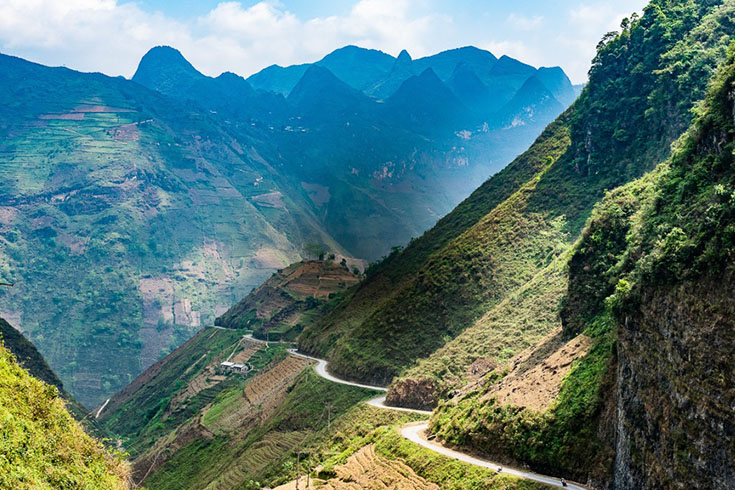Are you a beach bum or an adventure lover? It does not matter whether you are interested in a relaxing trip, a cultural trip, or an adventurous one, Vietnam has it all.
Owing to gorgeous natural landscapes, paradise beaches, dynamic cities, and unique culture, Vietnam can offer you a vacation with various possibilities.
Now, if you are attracted to the thought of traveling to Vietnam, you may wonder: What is the best time of the year to visit Vietnam?
The answer is: that the best time to go to Vietnam exactly depends on where you will go and what type of vacation you want to enjoy. Other factors attributing to the decision to visit Vietnam include holidays and festivals.
Choosing when to travel to Vietnam is crucial, both for packing purposes and personal comfort. Below we introduce a seasonal guide highlighting useful information about Vietnam's climate, weather by month, and seasons in different regions of the country. Also, you will find an idea of when to visit northern, central, and southern Vietnam in the 4 Golf And Tours quick guide.
1. Vietnam Weather Overview
Due to its narrow and long shape, Vietnam has three primary regions, including north, central, and south. Each one experiences different season features and weather events. At times, there can be white snow in the mountainous far north but sunshine and wind at the beaches in the south.
Vietnam's climate varies throughout the country at different times of the year, so it is essential to distinguish between the featured weather and climate of each region in Vietnam.
Vietnam weather highlights:
• The north of Vietnam: the climate includes 4 seasons, which are Spring, Summer, Autumn, and Winter. In northern provinces like Hanoi, the weather from May to October is hot and humid with rainfall, and cooler and dry from November to April. But in the far north, it can be very cold from December to January.
• Central Vietnam: The typical climate of central Vietnam is tropical monsoon, also known as tropical wet climate. This region experiences dry, hot weather from January to August with temperatures of up to mid-30°C; while the highest rainfall often happens in September, October, and November.
• The south of Vietnam: there are only two seasons, dry and rainy season in the south. It is dry and hot from November to April, gets wet and warm from May to October, and has the highest rainfall from June to August.
2. Vietnam Destinations by Region
A brief table of the best time of the year to visit Vietnam by region:
Region Best months to visit
North Vietnam January, February, March, April, October, November, December
Central Vietnam February, March, April, May
South Vietnam December, January, February, March, April
Now, let’s start to get to know more about the best time of the year to visit Vietnam by region:
2.1. The North of Vietnam + Mountainous Far North
2.1.1. Mountainous Far North: Ha Giang, Sapa, Bac Ha, Mu Cang Chai

The climate in mountainous far north Vietnam (like Ha Giang, Sapa) and the north-west region (like Mu Cang Chai) is split into two separate seasons: the dry season running from October to late March and the wet season running from April to September. It becomes frosty and cold from December to January, particularly at night.
So the best time to visit this region is from October to April (during the dry season), despite it getting very cold from December to January. You should avoid traveling to mountainous far north Vietnam during the rainy season from May to September.
For those who love adventure and trekking, the best conditions for these activities in Mu Cang Chai and Sapa are from September to November and March to May.
Cycling and trekking are practical all year round, but the winter months could be pretty chilly and the summer months are rather wet, so you had better consider these features before setting a plan for any activity in Vietnam.
2.1.2. Northern Vietnam: Hanoi, Hai Phong, Halong Bay, Mai Chau, Ninh Binh, Cuc Phuong,…

Generally featured by the tropical climate, the north of Vietnam has four distinct seasons, namely spring, autumn, summer, and winter.
The best time to visit northern Vietnam is spring (from March to April) and autumn (from September to November).
The worst time to visit the north of Vietnam is from May to early September. This is the rainy season in full swing and the air is humid and hot, which is particularly out of comfort zone for most European tourists.

2.1.3. Northern Vietnam Weather Highlights
Northern topography is complex and various with plains, mountains, coasts, and continental shelves, but the climate here is continental, as affected by the Chinese mainland weather.
Northern provinces of Vietnam experience cold dry winters from December to February, with a minimum temperature of 15°C. The coldest months of the year are December and January, with a maximum temperature of around 20°C.
The summer lasts from May to September, with hot and humid weather and the highest rainfall. If you do not have any problem with hefty rainfall, then you can still explore North Vietnam during these months. Nevertheless, keep an eye on weather forecasts to avoid the typhoon.
The high level of humidity could be somehow grueling at times, but the local natural flora is incredibly lush owing to the rain.

Trang An complex in Ninh Binh from above
The best time to visit North Vietnam includes:
• November: about 26°C, with 5 sunshine hours, 5 rainy days, 25°C water temperature
• December: about 22°C, with 4 sunshine hours, 3 rainy days, 22°C water temperature
• January: about 20°C, with 3 sunshine hours, 5 rainy days, 20°C water temperature
• February: about 21°C, with 2 sunshine hours, 7 rainy days, 19°C water temperature
• March: about 23°C, with 2 sunshine hours, 11 rainy days, 20°C water temperature
• April: about 27°C, with 3 sunshine hours, 9 rainy days, 23°C water temperature




